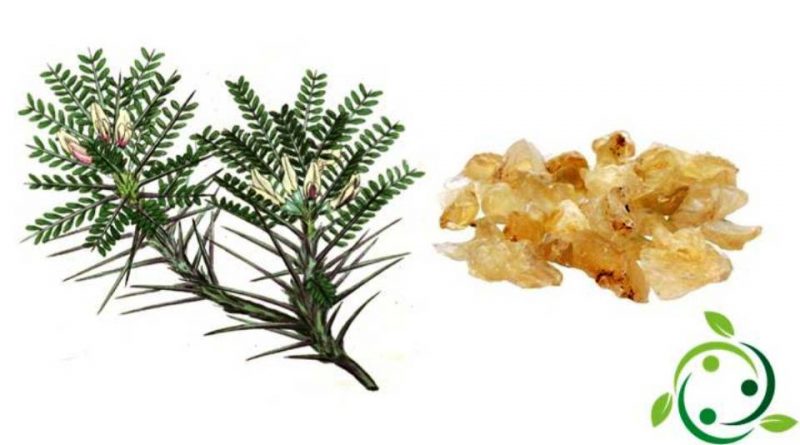Tragacanth gum
Tragacanth gum
The tragacanth gum is also a natural product obtained from exudates that ooze from some plants of the Fabaceae (Leguminosae). These plants belong to the genus Astragalus, and in particular to the Astragalus brachycalyx, Astragalus creticus, Astragalus gummifer and Astragalus tragacantha. These are species native to both Southeast Europe and Southwest Asia.
The term adragante, or dredging, comes from the Greek τραγάκανθα tragákantha, from τράγος trágos ” goat ” and ἂκανθα ákantha ‘thorn’, literally “thorn of the goat”; this is because these plants have thorns and, if incised or injured, a whitish and mucilaginous latex comes out from them which somehow resembles the wool of goats.
Worldwide, Iran is the largest and we also find good productions in Iraq, Syria, Turkish Kurdistan and Greece.
Chemically, tragacanth gum is made up of natural polysaccharides with high molecular weight (galactoarabans and acid polysaccharides) which, by hydrolysis, give rise to galacturonic acid, galactose, arabinose, xylose and fucose.
In the tragacanth gum there may also be small percentages of rhamnose and glucose which derive from traces of starch and / or cellulose.
As with most substances of natural origin, tragacanth gum can also be obtained by chemical synthesis.
From a physical point of view, tragacanth gum is viscous, odorless, tasteless and is soluble in water and does not present any toxicity.
The main uses of tragacanth gum are in the pharmaceutical field where they are used to obtain emulsions, but also in the food industry where they are used as thickeners: for sauces, syrups, gummy candies, ice cream, confectionery decorations, etc. or in the textile branch where they are used in the tannery and textile printing dyeing.
In Europe, tragacanth gum is classified with the food symbol E413.
These rubbers have been used for a long time, especially in the areas of origin and production, as well as in the food sector for phytotherapeutic purposes. In fact, they have antiseptic, emollient, anorexant and laxative properties; moreover, according to laboratory tests, they possess the ability to delay the growth of cancer cells.
Warning: The information shown is not medical advice and may not be accurate. The contents are for illustrative purposes only and do not replace medical advice.

